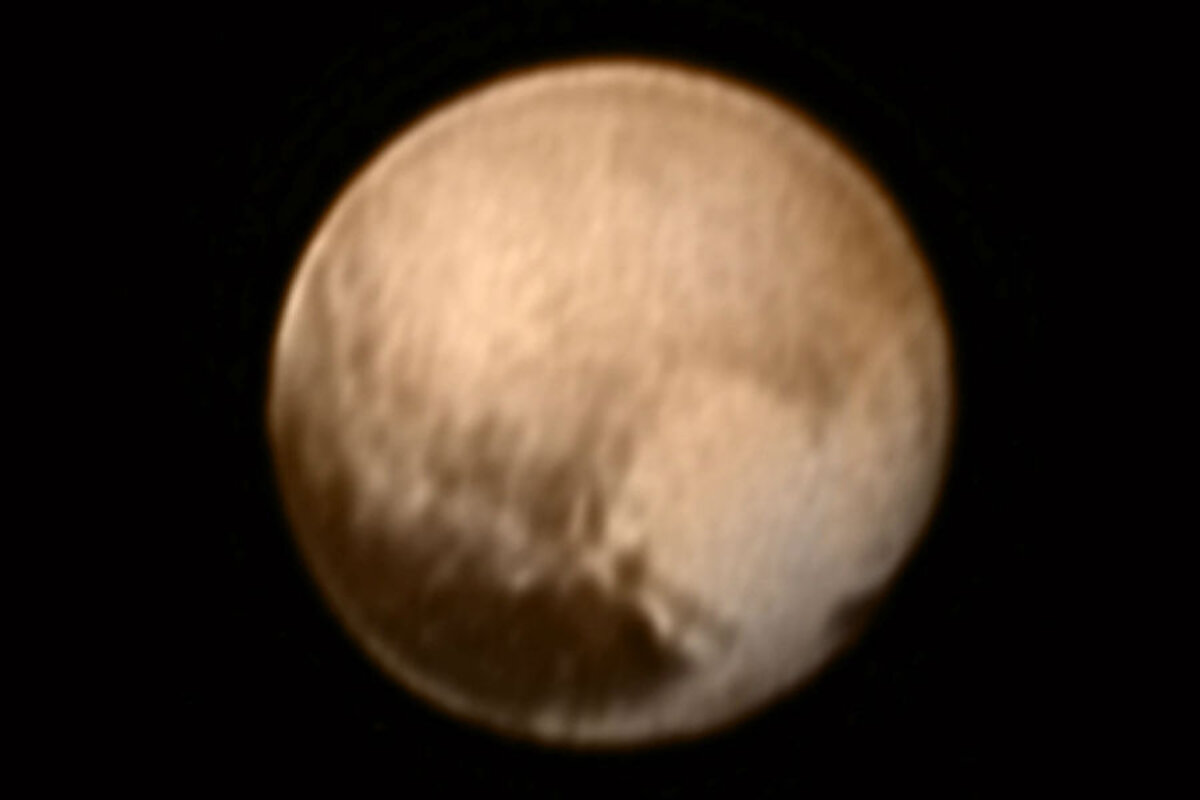Is this the cutest thing a dwarf planet has ever done?
Loading...
Does the former planet love us anyway?
NASA's New Horizons spacecraft captured Pluto's heart-shaped bright spot on Wednesday, the clearest image Earthlings have yet seen of the dwarf planet. At the time, the spacecraft was about 5 million miles from Pluto.
The heart reaches 1200 miles wide across, according to , and will be seen more clearly on the mission's closest approach on July 14.
"The next time we see this part of Pluto at closest approach, a portion of this region will be imaged at about 500 times better resolution than we see today," said Jeff Moore, the geology, geophysics and imaging team leader of NASA’s Ames Research Center, in a statement. "It will be incredible!"
The image officially kicks off the flyby sequence for NASA's New Horizons spacecraft, a daring mission launched nine years ago, when Pluto was the furthest planet in our solar system.
Six months later, the International Astronomical Union reclassified Pluto as a "dwarf planet," but that made no difference to the grand piano-sized spacecraft, locked into its three-billion-mile journey.
The side of Pluto that mission scientists and the public are now seeing is dominated by three regions of varying brightness: the elongated dark "whale" at the equator, the bright heart-shaped area, and a polar region neither bright nor dark.
With this mission, NASA will "round out humankind’s initial exploration of the solar system," writes , a co-investigator on the New Horizons team.
Years ago, the National Academy of Sciences ranked the exploration of Pluto and the Kuiper Belt as the highest priority for solar system exploration. This mission will help scientists understand how Pluto and its five moons “fit in” with the inner rocky planets (Mercury, Venus, Earth, and Mars) and outer gas giants (Jupiter, Saturn, Uranus and Neptune) of our solar system.
Pluto and its largest moon, Charon, are in a third category known as “ice dwarfs.” Like many of the gas giants' moons, but unlike the terrestrial planets, Pluto and Charon consist largely of ice.
After completing its study of Pluto and its five moons, New Horizons will continue on an extended mission to visit one or two Kuiper Belt Objects, ultimately traveling at least a billion miles beyond the orbit of Neptune to explore space only ever visited by the Voyager missions.
Pluto may have showed its heart, but New Horizons, like so many for Pluto, must eventually move on.




